How to Create an Interactive Textbook for Your Students
There comes a time where we need to say goodbye to traditional learning approaches, and that time came with the internet. While digital textbooks have spread like wildfire, they’re not enough to keep up with our world as it is now. Especially with the COVID pandemic forcing more and more people to stay at home. The learning approaches need to take it up a notch. That’s where the interactive textbook comes in.

Unlike with normal digital textbooks, interactive textbooks allow for a more well-rounded and entertaining learning experience. Students prefer noise and movement, becoming more and more enamored with visual learning. That’s why looking at big blocks of text reduces their ability to retain information. But interactive textbooks can help change that.
What is an Interactive Textbook?
An interactive textbook is an ebook version of a textbook that holds elements of interactivity. After all, going digital is not enough when it comes to online learning. It’s very handy because it’s the equivalent of having both your learning material as well as the visual aids, all in one place.
Making the switch to interactive textbooks, not just digital textbooks, has become rather essential in this day and age. The main reason behind that is that books are static, even digital books. It’s time to go beyond that to engage students. With everything becoming more advanced out there, holding students’ attention has become much more difficult. Reading huge blocks of text can hinder the overall learning process. But with the added interactive component, learning will become an experience onto itself.
What Formats Allow for Interactivity?
There are so many ebook formats out there to support the various different e-readers people use. Whether you’re reading on your laptop, phone or tablet, the formats are meant to support them all. But one thing you must keep in mind is that not all formats allow for interactivity. Most ebooks are static or fixed, and as such, aren’t compatible with interactive elements. However, there are two formats that are.
EPUB
The EPUB format is one of the most popular ebook formats worldwide. When it comes to interactivity, the EPUB more than makes up for all the other formats that aren’t compatible with it. Not only can you add all sorts of interactive elements to it, you can even optimize it so the file size isn’t so large. They work on all sorts of ebook readers on your laptop, phone or tablet devices.
Apple Books
Apple Books are digital books created specifically for macOS and iOS devices. Basically, they’re EPUB files that are only read on Macbooks, iPad, and iPhones. As with EPUB, they can hold a great deal of interactivity. The only drawback is that they’re exclusive to Apple devices. (It bears mentioning that Apple no longer supports iBooks Author as it’s more focused on ebook creation using Pages now.)
Apps
One format that doesn’t see much spotlight as the rest happens to be ebook apps. But it is slowly growing in traction. Ebook apps are both ebooks and ebook readers merged together in one application. They can be downloaded as mobile apps, desktop apps and web apps to increase compatibility.
The PDF format has been predominantly known as a static format, meaning that it can’t be interactive. Though, there are some instances where you can add media to it. However, unlike with EPUBs, interactive PDF ebooks are limited. They don’t function well on all readers and can be rather large in size. They’re not what we would recommend for this type of interactivity.
To learn more about the different ebook formats available here’s a guide on Ebook Formats Explained for Beginners.
What Interactive Elements Can You Use?
So how can you increase interactivity in your textbook to make it more gripping? Here are but a few elements that can help you with that. We’re at a point where images no longer suffice in the learning process. It’s time to take things to the next level, and you can easily do that with the following.
Videos
Videos are a great addition to your textbook. Gone are the days where you need diagrams to explain each part of a process or an experiment. Now, you can add a video that details the entire process. It will be much more productive for students to see it all in front of them rather than still images.
If you don’t want your textbook to be large in size, you can either embed videos from links or optimize the videos you add. The drawback with embedded videos is that they require an internet connection. Most video-sharing platforms, such as YouTube and Vimeo, provide an embed code with every video to help you embed them easily wherever you choose.
As for the latter option, here’s How to Optimize Videos and Add Them to Your Ebook. The steps are quite effective and don’t make you lose that much on quality.
Audio
There comes a time where an audio file might be useful inside your textbook, especially if it’s a children’s book. Whether you want to add ambiance, the pronunciation of specific words or help struggling readers, this element is very important.
Say you’re creating a language textbook. The pronunciation of the words is a vital part of the learning process. Or what if you’re creating reading books for your first-grade class? They might be struggling with reading the words to follow along with the story. Being able to hear the audio will help them a great deal.
Just like with videos, you can embed the audio or optimize it. Here’s How to Optimize Audio for Your Ebook.
Questions
One important element, when it comes to textbooks, is ensuring your students understood the material in it. What better way to do that than by asking them questions? There are all sorts of question types you can add to your textbook to help them out. You can add drag and drop, true or false, or multiple-choice questions.

The best thing about them is that they both benefit you and your students.
There are questions added as a form of self-assessment for the students. After they answer the questions, they can immediately find out what they got right and what they got wrong. You can even lead them straight to the chapters they seem to be having difficulties with.
As for you as a teacher, you’ll immediately get your student’s test scores. Then you’ll be able to figure out which parts of the book they’re struggling with and how many students are having a hard time with it. That way, you can adjust the material accordingly.
There’s a lot more to learn about The Power of Questions in Interactive Ebooks.
Interactive Images and Popups
While images may seem mainstream when it comes to ebooks, interactive images are a little different. After all, they allow for a little interactivity.
For example, say you have an illustration of a plant. Instead of marring the image by adding labels to each part of the plant, you can add a popup button. That way, your students can view the image with ease and click on whatever part they’d like to know the name of. You can even add explanations that will be more practical than having it be in paragraphs below the image.

Another example would be zooming in or out. Interactive images can allow your students to zoom in on a particular part of the image to view it better.
Or, you can add a trigger to your image, so that once your students click on it something happens. Maybe it will change the color once they hover over it, or it can play a video or an audio file. Whatever it is, there are a lot of options to pick from.
Animation
Compared to all the other interactive elements, animation might not seem as vital, but it does add its own creative touch. You can make your images float around or add some movement to your background to liven it up. It doesn’t have to be elaborate, it can be subtle but effective. The main purpose is to keep your students gripped so some animation might be a fun addition.

Not only that, you can use GIFs to replace videos to reduce the file size if the audio is not that important. For more on this, here are 4 Simple Animation Techniques for Ebooks you should check out!
Widgets
The last element we’re bringing up today is widgets. They’re, more or less, addons for your textbook that allow you a whole slew of options. You can add interactive graphs and charts. You can add crosswords, word searches, and other teaching games. You can even add calculators, checklists and forms. The possibilities are endless.

But that’s not all. There is so much you can do with an interactive textbook! Though, some of it might require some developing skills. When it comes to book widgets, the world is your oyster.
3D Models
While adding images might be interesting, adding 3D ones is a much better experience. Say you’re giving an art class and teaching your students all about Michelangelo’s David statue. Instead of showing them a photo of the statue, you can add a 3D model of it into the textbook. That way, the students can click on it, enlarge it, and move it around. It will be like they’re right there with it!

One of the best places to find and create your own 3D models is Sketchfab.
How Do You Create an Interactive Textbook?
You’re now familiar with the formats that allow for interactivity and the type of interactive elements we can add. It’s time to learn how to create an interactive textbook. The best way is by using an interactive textbook creation software. While such software are a dime a dozen nowadays, not all of them allow for interactivity. That is why you’ll need to do some research before you pick the right one.
For today, we’re using Kotobee as an example.
1. Gather your content
Before you start doing anything, you’ll need to gather all the content you need for your textbook. From the material to the visual aids and tests/questions you’ll be using. It’s preferable that you make sure you have everything together before you start on your ebook so that the process goes more smoothly.
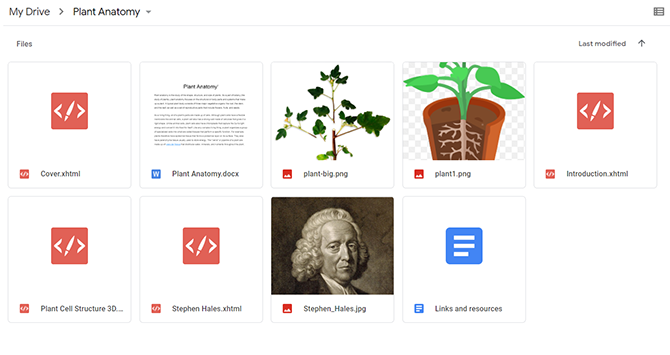
The writing process is not that simple for non-writers. So, be sure to make a checklist of everything you may need and put them all in one folder so that they’re easy to find.
2. Sign up and download
The next thing to do is to head on to Kotobee.com and sign up for a free license. It’s really quite easy. Simply add your email in the blank space and click on Get your free license.
You’ll get a verification email sent to your inbox. Head on to your email and click on the verify button. The link will lead you to a page asking you if you’ve read the terms and conditions. Check the box, click on verify, and there you have it, your free license.
Scroll down and you will find the download buttons. Click on the one that works with your operating system.
3. Choose your layout
The next step is to open Kotobee Author. You’ll get a popup welcoming you and asking you for your preferred layout. There are two layouts at this stage: fixed and reflowable. Considering we’re going for an interactive textbook, we’re going to choose a reflowable layout to allow us to add interactive elements.
After clicking on Reflowable layout, go to the top right corner of your software and click Enter serial number to add the license you received in your email.
4. Add your content
This is the longest stage where you’ll be adding all of the content you’ve gathered into the ebook and dividing it into chapters. If you have the material ready in a Word or PDF document, then you can just import it and fix it up.
First, click on Book Manager on the upper left side of the edit tab. Fill in the information needed.
Then, add new chapters for your content until you have it looking like a book.
5. Add interactive elements
We’ve now reached the fun stage where we’ll be enhancing the book material with interactive elements. You’ll find the different elements available on the right-side panel in Kotobee Author.
Pick out which ones you’ll be using and try not to overdo it. Too much of a good thing can be bad after all.
In this book, for example, we’ve chosen to use Images (with interactive popups), Videos, and 3D models.
6. Export your ebook
Now that everything’s set, all that’s left is to export your textbook in the format you require. The best thing about Kotobee is that it has a ton of them available. Merely click on the Export tab and choose the one that best suits your needs.
Before you export, peruse the formats available, pick the format you want to export in and click on Create. You can even choose to host the textbook online instead of exporting it out as a file. Basically, the world is your oyster. Once you do that, you’re all set!
Keep in mind that some export options will have more requirements, such as exporting mobile apps. For more information on exporting requirements, you’ll find everything here.
To see the end result with how the textbook turned out, here’s Plant Anatomy.
You can also check out other ebook samples we’ve created:
- Photography Basics
- Design Styles
- 8 Stunning Ancient Egyptian Monuments
- Health and Fitness
- Holistic Aromatherapy
- Coronavirus
- Ebook Sales Statistics
They hold different elements of interactivity you can use within your textbook, so feel free to explore them!
Conclusion
Interactive textbooks are the gateway to the future of learning. The world is changing, so is the education sector as well as the new students coming in every year. It’s paramount for you as educators to keep up and be able to help give them an enhanced learning experience. What better way to do that than give them the closest thing to a hands-on approach to what they’re learning? They’re the key to a learning experience that will keep your students’ attention.
Read more here.
5 Hacks for Creating a More Engaging Ebook

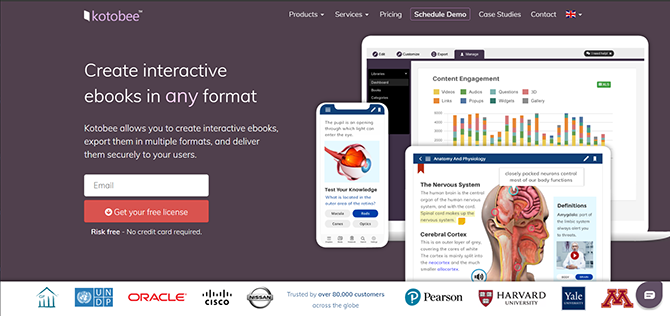

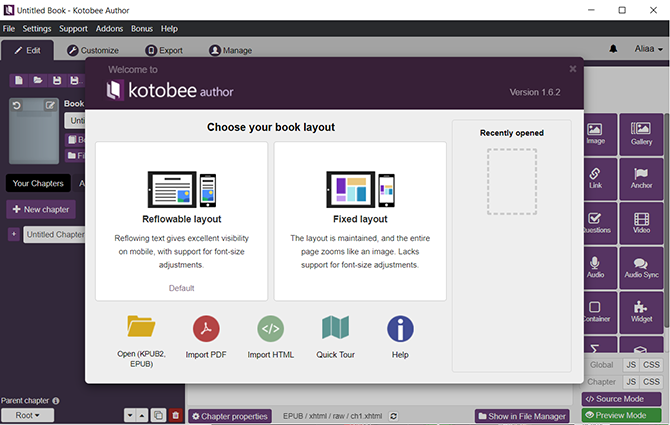
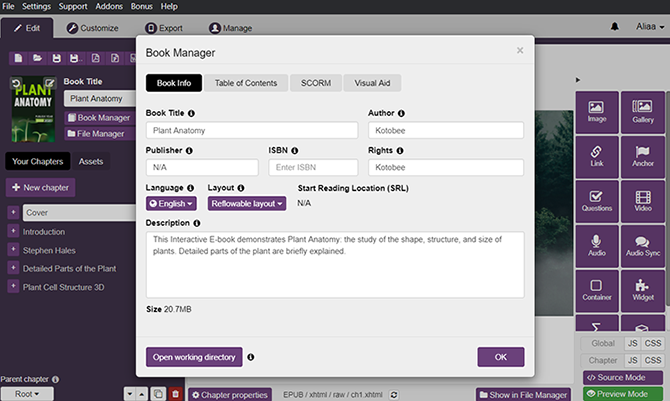

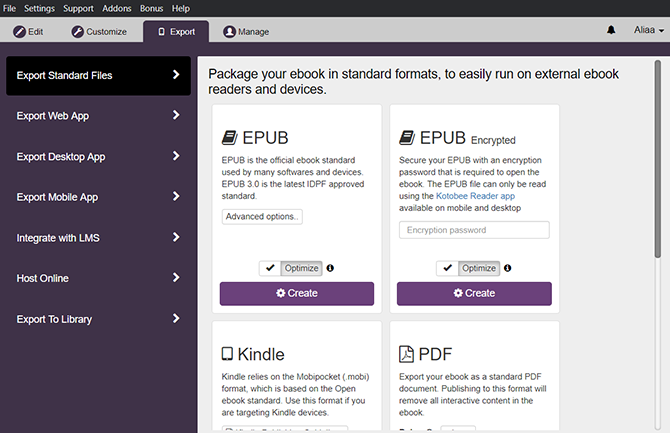











Peter Cockcroft
May 6, 2020is there a comparison with Designrr?
Kotobee
June 24, 2020Sadly, so far there isn’t a comparison. We will keep it in mind for the future.
Mrs. P McPhee-Hield
August 11, 2020I loved reading this! I am definitely looking into this.
Kotobee
August 18, 2020We are so glad you enjoyed it!
Joel Gilbert
November 9, 2022This looks great. I am creating a training manual, is it possible to print a physical copy of the ebook i design? Obviously, it wouldnt have the interactive features.
Second question, who owns the rights to the ebook i create and can I move it to another platform, later. Thank you
Kotobee
April 5, 2023Regarding your first question, yes, it is possible to print a physical copy of the ebook you design. However, as you noted, the interactive features will not be present in the physical copy. Using Kotobee Author, you can easily export your ebook as a PDF and print it out.
As for your second question, you own the rights to the ebook you create using Kotobee. You can publish it on any other platform.
If you have any further questions or concerns, please feel free to reach out to our support team.